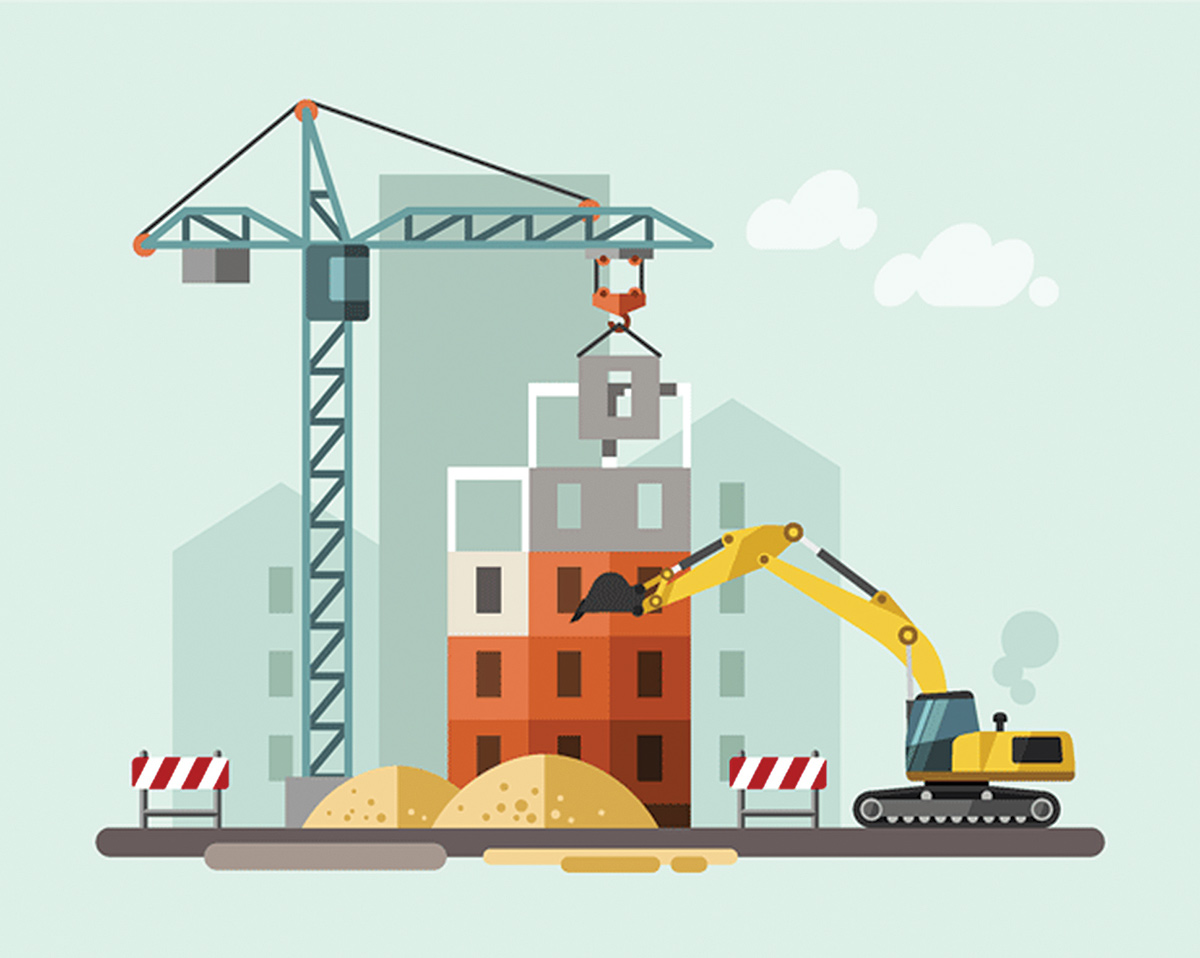
Interest in construction technology and materials came to the fore after the 2015 earthquake. The market witnessed an onslaught of businesses promoting durable and lightweight safe structures that could be less harmful in seismic zones.
B360 talked with Krishna Bhakta Duwal, CEO of International Green Developers Nepal (manufacturers of Gorkha Eco Panel) and Bikram Prajapati, Managing Director of Bajra Brick and Tile Industries about the same. Excerpts:
How has the mentality of people changed post earthquake about alternative construction materials and technology?
KBD: Before the earthquake, only a few educated people and those who could afford it, understood the importance of well-analysed structures and were conscious about a solid foundation. But even then reinforced concrete structures were affected in certain parts of urban areas like Gongabu. Due to heavy superstructure and weak substructure, tilting of buildings and damage were seen after the earthquake. People now are conscious about the necessity of a solid foundation. But it’s not the same in rural areas eve now.
BP: There are multiple factors that affected the stability of buildings during the earthquake. Before earthquake, many people ignored the importance of the structural foundation for RCC buildings and for wall load bearing buildings. They never took care of the strength of materials being used. After the earthquake, there has been a rise in people’s awareness of the materials being used to build. Those who cannot afford RCC buildings have started to use high quality brick and hollow blocks for wall bearing structures. Many people now check the compressive strength.
What are the important factors that an earthquake resistant structure should have?
[caption id="attachment_6470" align="alignright" width="180"] Krishna Bhakta Duwal, CEO of International Green Developers Nepal[/caption]
Krishna Bhakta Duwal, CEO of International Green Developers Nepal[/caption]
KBD: We should divide this into two parts:
1.Substructure: The foundation should be rigid enough to transfer the load of the superstructure equally to the ground in all directions of the footing. Strap beam, tie beam, etc. should be practiced more in order to increase the rigidity of the foundation.
2.Superstructure: The superstructure should be elastic enough to withstand earthquake load. Basic design considerations such as alignment, symmetry, long span short span consideration, window-door opening area and placement, etc. should be as per the National Building Code or IS 1983-2002.
The structure diaphragm and beam-column connections should be strong enough to withstand the shearing and tearing during the earthquake occurrence.
BP: Stiffness or strength, regularity, redundancy, foundation and continuous load path are important factors for an earthquake resistant structure.
What are the laws that have been implemented post-earthquake regarding construction by the government?
KBD: Modified National Building Code 2016, Reinforced Concrete Code IS 456:2000, IS 1893-2002, SP 16, IS 800 (for steel structure), and for earthquake resistant structure IS 1893-2002 are the basic codes of conduct that a structural design and construction should follow.
Post-Gorkha Earthquake 2072, many modifications have been done in National Building Code. National Building Code of Nepal comprises of design consideration of RCC building, Steel Structures, Masonry Load Bearing structures and Timber and other lightweight structures.
These laws are being followed in urban areas after the earthquake. But in rural areas, the implementation of building codes is still ill-practiced.
BP: Department of Urban Development and Building Construction has disseminated all the information on their website, dudbc.gov.np.
What significant changes have been introduced in new buildings built post-earthquake?
[caption id="attachment_6469" align="alignright" width="180"] Bikram Prajapati, Bajra Brick and Tile Industries[/caption]
Bikram Prajapati, Bajra Brick and Tile Industries[/caption]
KBD: New buildings seem to be more rigid, stiff and earthquake resistant than before. But some points should be considered in a seismically active (Zone IV & V) area like Nepal. The rigid and heavy structure is not the only option. The ground soil strata and bedrock in Nepal are mostly seismically active. Also, Nepal does not implement any rule of the dismantling of buildings after the completion of the effective time period of service, i.e. if the theoretical life of cement is 100 years but Nepal does not have any rule stating the building should be dismantled, retrofitted, improvised or strengthened after the completion of the service period of the building.
Nepal, being in the convergent tectonic boundary of Eurasian plate and Indian plate, the return period of a remarkable earthquake is less than 100 years (around 90 years). In such scenario, the buildings that have passed the service period are vulnerable in the coming earthquake which is less than 90 years from the date. So, steel structures whose reusing and improvising is easier than RCC structures should be adapted more in the case of a country like Nepal.
More of the casualties of Gorkha Earthquake were due to the integration of non-structural components of building i.e. destruction of masonry walls. It seemed to be the effect of more dead load in non-structural components in reinforced buildings. Hence the new ideas of lightweight wall constructions should be appreciated as a better option for those non structural components. Human causalities during occurrence of large earthquake will be minimized by this modern technology.
How well do people know about styling of buildings and homes?
KBD: Compared to developed countries, styling of buildings and homes are rarely adapted to in underdeveloped or developing countries like Nepal. Especially in rural areas, the conventional designs are still adapted, whereas in urban areas few well and unique styled buildings can be seen.
People are still talking about stone, brick, etc. as primary masonry units for buildings although modern box-system designs of styling are being widely appreciated in urban areas nowadays. In rural areas, stone and load bearing brick masonry are still widely used mainly due to unavailability of resources like in urban areas.
Lightweight construction materials with either modern or contemporary or traditional style design should be more adopted than the conventional heavy construction materials.
BP: The knowledge of styling of buildings and homes are limited to few. My suggestion to people who are still ignorant should learn more from designers and architects. Materials and styles are completely individual interests. Some love traditional style, whereas some loves modern or a fusion between traditional and contemporary styles. There are various building materials available in the market.
Individuals should know their needs while choosing the right material. For instance, if you want to build a school in the rural area, prefab might be a good choice, whereas for multistoried building and residences in urban areas, lightweight brick (CLC or AAC) or concrete brick might be a good choice because it is environment friendly and also has good properties compared to traditional bricks. But it’s always good to have a lab report as all manufactures may not produce materials of necessary quality.




